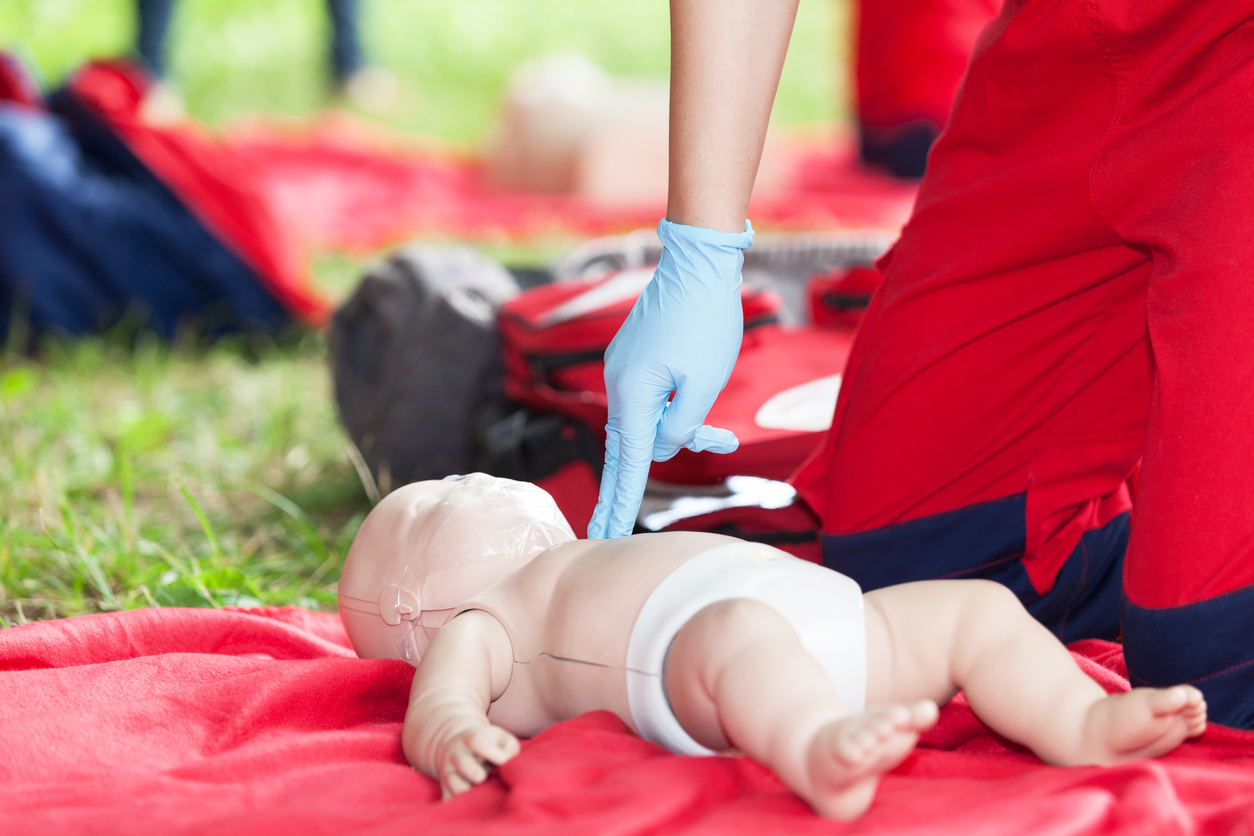
Approximately 3.9 million babies are born in the U.S. each year, with approximately 3,500 occurring on the way to the hospital. Fortunately, 90% of these are uncomplicated births, and the infant generally does not require additional intervention for survival.
1. Emergency Delivery
In a normal delivery, there is little need for a paramedic to intervene. However, approximately 350 prehospital births require resuscitation of the infant each year. Most EMS providers report feeling unprepared to provide neonatal intervention, with 66% saying they had insufficient training in neonatal resuscitation. The following is important information for an EMS crew to consider in an emergency situation:
- Sterility: techniques should allow for the most sterile environment possible. EMS providers should wear eye protection, masks, gowns, booties, and gloves, and the patient should be protected with a clean drape if possible.
- Positioning: typically, the mother should be placed in the lithotomy position, lying on her back, optimally with her feet raised above her pelvis. A good position should open the pelvis and allow access and sightline to the perineal area.
- Labor symptoms: watch for the following symptoms to indicate imminent delivery
- rupture of amniotic sac
- increasingly frequent and intense contractions
- the urge to defecate
- bulging perineum, or crowning
- Delivery of the baby: when the head presents first, the delivery is followed by shoulders, body, and legs. The EMS worker should support the infant’s head, which is usually face down. Untangle the umbilical cord if it’s wrapped around the neck. Follow local procedures for clamping and cutting the umbilical cord with sterile scalpel or scissors.
- Delivery of the Placenta: placental delivery usually occurs within 5-10 minutes of the baby’s delivery. This delivery will be obvious from the rush of blood. Massage the uterus to stimulate contractions and control hemorrhaging.
2. Neonatal Assessment
EMS workers should evaluate infants with these questions:
- Was the baby full term (37 weeks or more)?
- Is the infant breathing or crying?
- Does the newborn have appropriate muscle tone?
If these questions receive a positive answer, the baby can be dried off and placed in a blanket with the mother.
3. Emergency Resuscitation
EMS professionals should utilize the APGAR score as a guideline for assessing the infant’s risk level. Based on a 10-point scale, APGAR is an acronym for checking a baby’s appearance, pulse, grimace, activity, and respiration. APGAR scores are determined at one minute of life and again at five minutes. An infant with an APGAR score below 7 at the one-minute level should be resuscitated with a repeated APGAR assessment every five minutes.
If intervention is required, positive-pressure ventilations should be performed at 40-60 per minute for 30 seconds followed by reevaluation. If the heart rate falls below 60 bpm, chest compressions should be given at a ratio of 3 compressions per ventilation. Transport to the hospital is a priority at this point.
Proper knowledge and training are crucial for ensuring survival in emergency situations.
About Provident Insurance Programs
With roots dating back to 1902, Provident Insurance Programs is a program administrator that serves paid and volunteer firefighters in addition to emergency medical responders with numerous custom-tailored insurance programs. We’ve also extended our expertise and experience to offer benefit plans and coverages to participant groups as well as Transportation Benefits. We are committed to continuing to provide superior customer service, and would be happy to speak with you to provide further information. Give us a call today at (855) 201-8880 to speak with one of our representatives.
Social Title: Procedures for EMS Handling of Newborns in the Field
Social Description: Although prehospital neonatal emergencies are rare, EMS crews must be prepared for when they do occur. Read to learn about life-saving emergency techniques.


